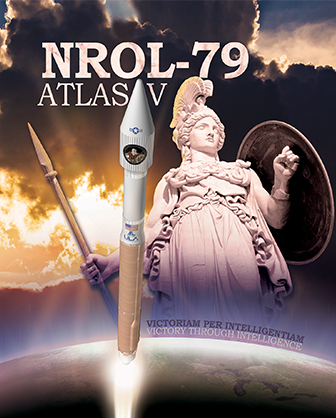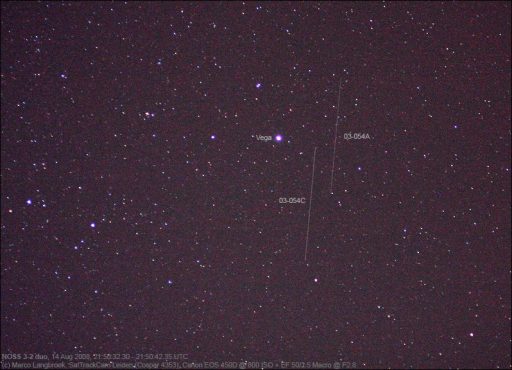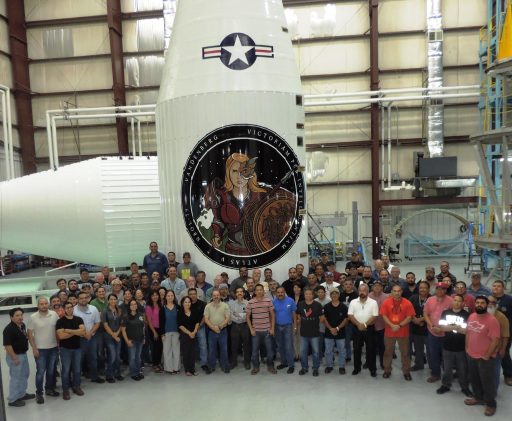Identifying the classified NROL-79 Satellite

The United States National Reconnaissance Office is an intelligence agency tasked with the design, construction and operation of all U.S. reconnaissance satellites and delivers satellite intelligence to other intelligence agencies including signals intelligence for the NSA, image reconnaissance data to the NGA and measurement & signature intelligence to the DIA. Established in 1961, the NRO has been shrouded in great secrecy and its existence as an agency was only first acknowledged in the early 1990s.
As an intelligence agency, the NRO goes through great lengths to keep its activities secret, therefore the identity of all NRO satellites is classified. However, it is possible to identify the nature of satellites taking into account their launch site, launch window, launch vehicle type and ascent path. Sometimes, hints can be found in mission logos and, after launch, most satellites are typically tracked in orbit by a worldwide network of observers, revealing from where they operate, and often what they are tasked with.
Some cases are easier to solve while other NRO missions can only be narrowed down to a number of candidates. There is not much of any doubt as to the identity of NROL-79 as the eighth mission supporting the third generation of the the Naval Ocean Surveillance System, NOSS for short.

NROL-79 utilizes the base version of the Atlas V (401) and launches from the U.S. West Coast which already narrows the identification of the mission to those requiring a polar or retrograde orbit. The three known NRO satellites to launch on Atlas from Vandenberg are NOSS (Naval Ocean Surveillance System), Trumpet Electronic Intelligence Satellites and FIA-Radar imaging satellites. Trumpet satellites have used Atlas V 411 and Delta IV M+ (4,2) rockets while FIA-Radar launches have to date used the larger Atlas V 501 and Delta IV M+ (5,2) vehicles. As this launch uses the 401 version of Atlas, NOSS is the most likely option since all of the most recent NOSS missions used the most basic Atlas V version.
Additional evidence comes through the timing of the mission as it was found that NOSS 3 satellite pairs are being replaced at a ten-year cadence as shown of the NOSS 3-5 launch in 2011 that replaced the 3-1 pair which orbited for just over ten years and drifted out of formation eight months after the replacement was sent up. The same pattern was repeated with the 3-6 pair the replaced 3-2 after nine and a half years in orbit and NOSS 3-7 was orbited ten and a half years after the 3-5 pair to become its replacement. The launch of NOSS 8-3 comes just under ten years after the NOSS 3-4 mission was lifted into orbit by an Atlas V rocket, however, requiring the satellites to correct their orbits after a premature shutdown of the Centaur upper stage.

The Naval Ocean Surveillance Satellite project dates back to 1976 when the first generation of NOSS satellites, flying in triplet formations, was first launched – taking over from the now declassified Poppy Program that served as a NOSS precursor, launching four satellites in 1971.
The purpose of the NOSS satellites is the location of foreign ships and aircraft to deliver tactical information to United States intelligence agencies and the military. To accomplish their task of locating and monitoring ships/aircraft, the NOSS satellites employ the time-difference-of-arrival by tracking the vehicle’s radio transmissions. A calculation of position requires multiple satellites to fly in a precise formation to calculate the relative geometry between the satellites and the ship through the time difference in the arrival of the signal – not dissimilar to the Global Positioning System where a ground-based receiver requires multiple satellite signals to calculate its position.
NOSS went through three generations of satellites, implementing technical improvements and mass reduction. The first generation of satellites was launched between 1976 and 1987 followed by the second generation of NOSS triplets that was launched between 1990 and 1996. The third generation, making its debut in 2001, provided a surprise as the NOSS satellite triplets were reduced to pairs of satellites.

Additionally, the change from triplets to pairs also came with a change in the orbital setup of the satellites that had been launched to 1,110-Kilometer orbits at an inclination of 63.4° since their conception.
The newer satellites entered orbits around 1,000 by 1,200km, 63.4° to avoid a phenomenon discovered during the initial operations of NOSS – a gradual increase in orbital eccentricity due to perturbations caused by Earth’s gravitational field. The new setup, as detailed by satellite tracker Ted Molczan, launches the satellites into an orbit with an argument of perigee near 180 degrees. The argument of perigee shifts gradually to 90 degrees and with that, the orbit becomes circular at 1,100 Kilometers around four years after launch. The orbital precession then continues and the orbit becomes elliptical again, reaching 1,000 by 1,200 km again after eight years, likely the operational life of the satellites.
Technical details on the NOSS satellites are only sparsely available. They are built by Lockheed Martin and operated by the U.S. Navy under the code name ‘Intruder’ according to information leaked out in 2013. Stationkeeping between the satellites is likely accomplished by modifying their ballistic coefficients through the use of external panels that can adjust the area faced to the ram direction where minute drag effects can be utilized to slowly modify the orbit. Reportedly, the two-spacecraft NOSS stack launching on Atlas V has a mass of around 6.5 metric tons.
The Naval Ocean Surveillance Satellites in their initial triplet constellation were closely copied by the Chinese. Triplets of Yaogan satellites, China’s primary military reconnaissance satellite constellation, were launched starting in 2010 and entered orbits similar to the first two NOSS generations.
